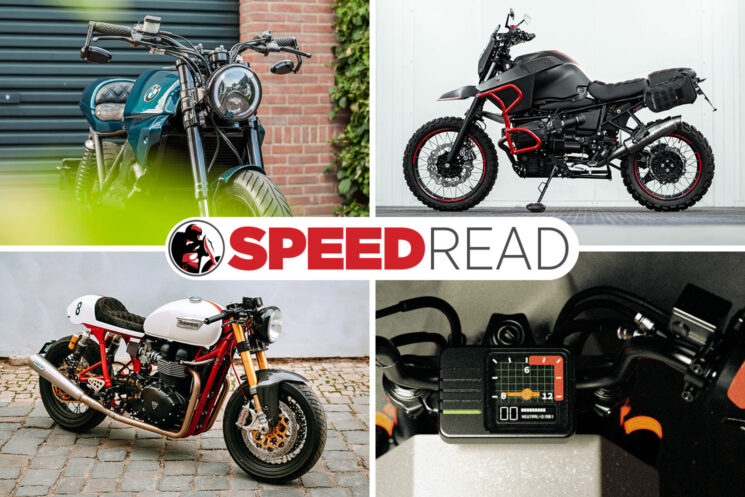
Remember the adorable Honda Motocompo? One industrial designer wants to bring it back, so he’s rendered a modern Honda Motocompo concept that uses the Monkey as a base. We’ve also got a tidy Triumph Thruxton from the Czech Republic, a BMW K75 from The Netherlands, and a BMW R1100GS from Germany.
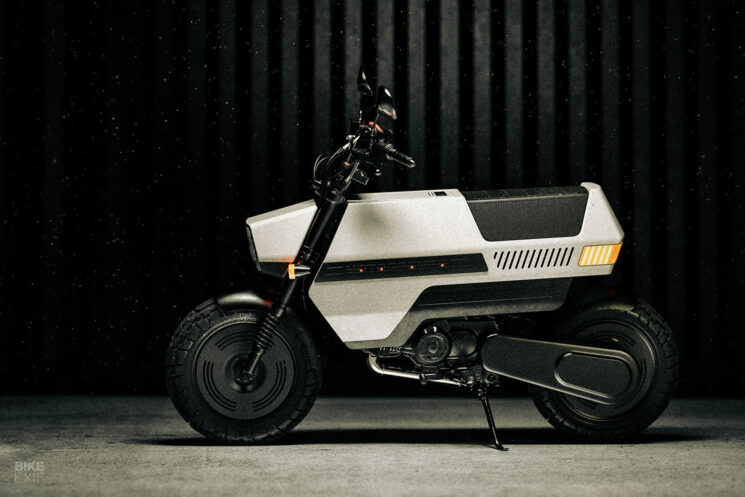
Honda Motocompo concept We seldom feature digital design concepts on Bike EXIF, simply because the story of how a design is brought to life is often more compelling than just the design alone. But the internet is crawling with highly imaginative motorcycle concepts—all you have to do is sift through the silliness to find the gems.
This one is particularly interesting—not only because it’s extremely well-rendered, but also because it’s rooted in reality. It’s the work of Boston-based industrial designer Mitch Silva, and it asks the question; “What would a modern-day Honda Motocompo look like?” And if Mitch has his way, it’ll eventually become a physical custom build.
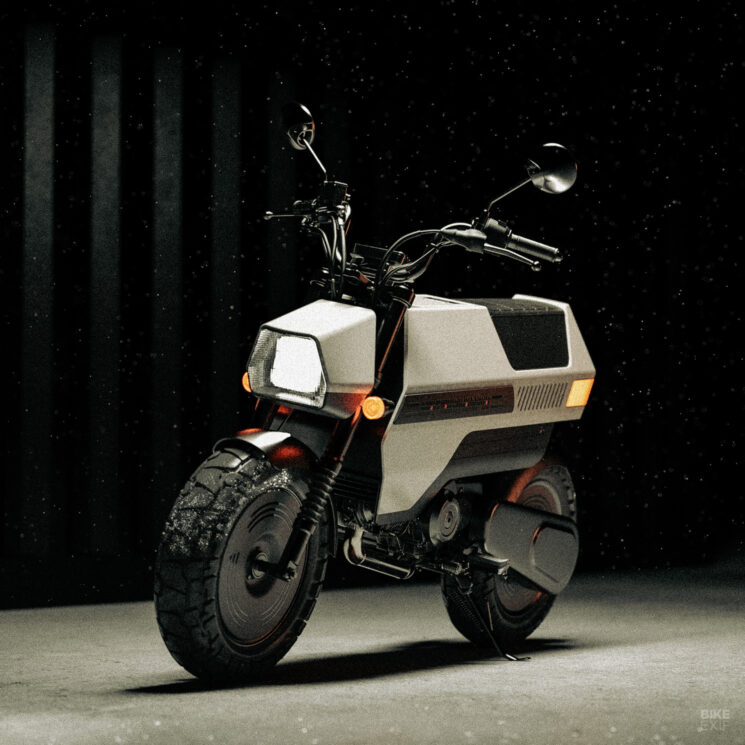
Mitch has over a decade of industrial design experience, with a client roster that includes the likes of Bose and Rivian Automotive. He recently launched Bonedog Industrial Design—a design consultancy focused on helping custom motorcycle builders visualize their ideas. He rendered the neo-retro Honda Motocompo concept as a personal project, to add some extra motorcycle flavor to his portfolio.
Honda’s mini-bike range is packed full of nostalgic bikes, but they all reference historic Honda models from the 60s. Believing that the lineup lacks some 80s radness, Mitch envisioned a modern Motocompo built on the current Honda Monkey platform.
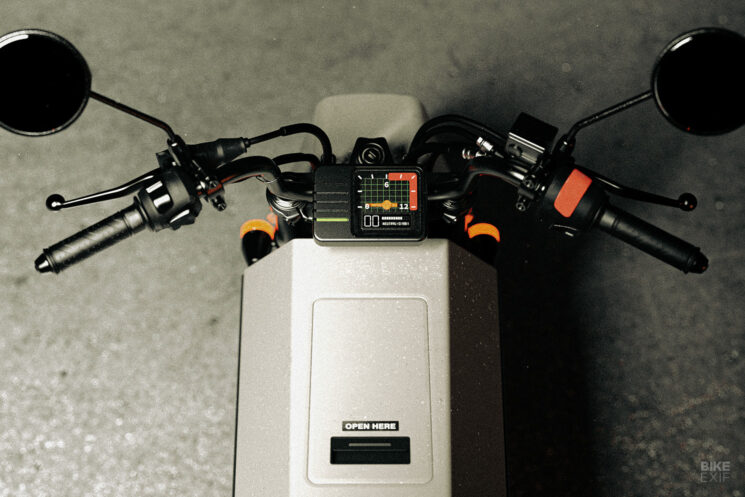
If you don’t remember the Motocompo, it was a foldable scooter that looked like a briefcase and could fit into the trunk of a car. Mitch’s concept isn’t designed to fold, but it does transform the Monkey platform into a worthy reimagining of the iconic Motocompo.
The concept wraps the Monkey in enclosed bodywork that traces the classic Motocompo silhouette, but with a more angular vibe. The vents cut into the side of the body, blocky headlight, high handlebars, and wraparound taillight are all clear nods to the Motocompo. The sharpened-up lines and black inlays draw inspiration from another 80s Honda—the Honda Elite scooter.
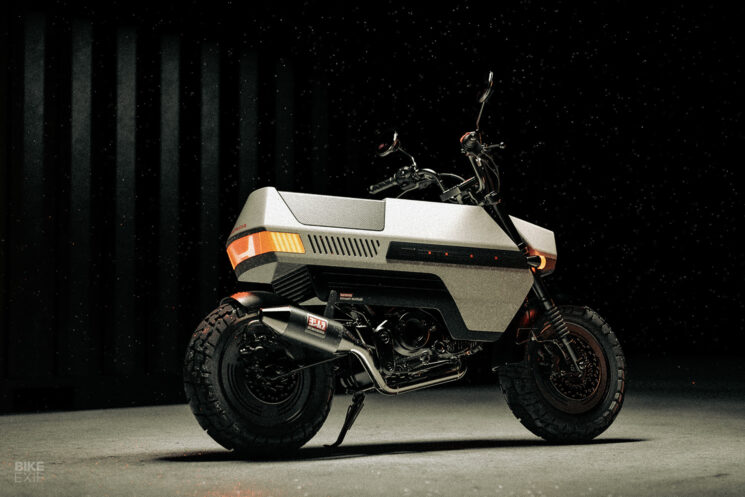
The lower half of the render shows the Monkey’s bones, with the engine blacked out to match the Motocompo’s finishes. The swingarm is modeled after the Honda Grom, and there’s a Yoshimura exhaust hanging off the side. The Motocompo had cute three-spoke wheels, so Mitch designed wheel covers, with grooves cut into them in sets of threes.
If the stars align, Mitch will bring this bodacious Honda Motocompo concept to life. He plans to build it as a plug-and-play kit, ideally using the Grom as a base rather than the Monkey. Challenges will include building a hidden fuel cell, and finding a strong material that’s also affordable so that he can keep the costs down. [Bonedog Design]
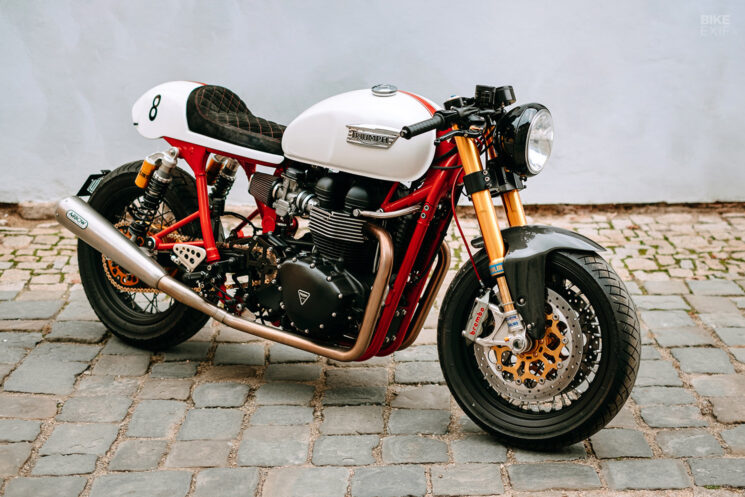
Triumph Thruxton by Rod Motorcycles Building a custom motorcycle is easier said than done. The owner of this 2010-model Triumph Thruxton found that out when he decided to take his bone-stock café racer to the next level. He ordered a smorgasbord of top-shelf bits for it—but he eventually ran out of knowledge and time, and the bike was relegated to the corner of the garage.
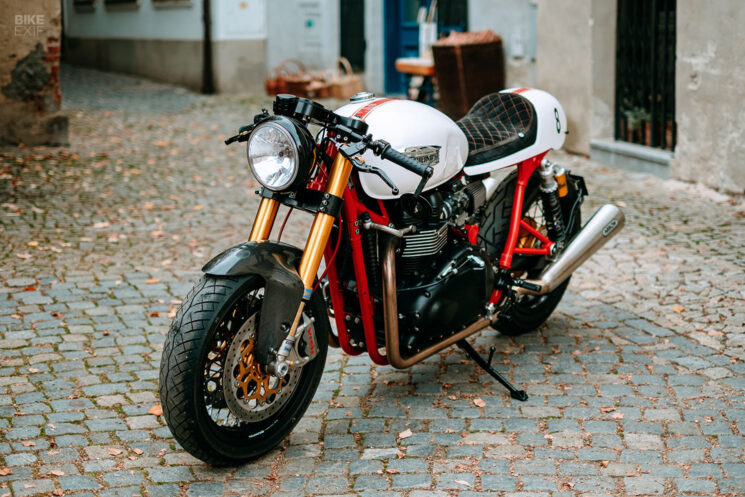
Two years later, he saw a photo of a Honda that had been customized by David Zima at Rod Motorcycles in the Czech Republic. With a renewed interest, he dropped the bike and parts off at David’s workshop to get the build over the finish line.
With Öhlins suspension, tubeless Alpina wheels, and Brembo radial calipers already purchased, the build was off to a good start. Rod’s task was to take those parts, add a whole bunch more, and tweak the bike’s styling. The Thruxton is a handsome enough café racer in stock form, but the client wanted a more purist look.
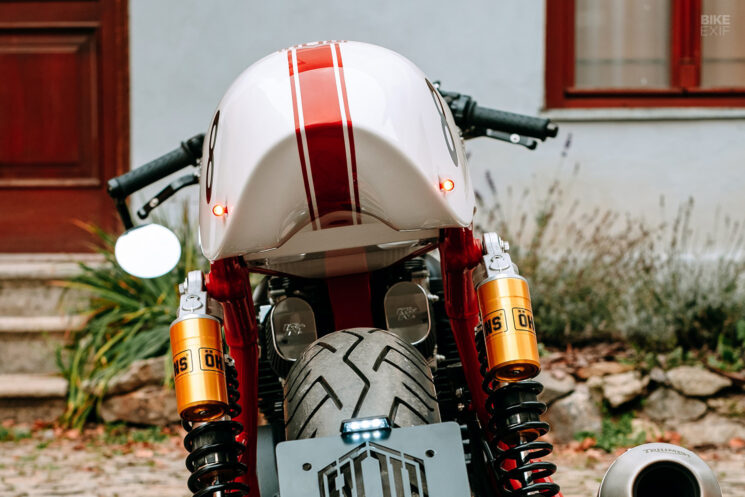
Step one was to swap the Triumph’s chunky OEM seat for a fiberglass tail unit. The subframe was trimmed to accommodate it, and the seat was trimmed in stylish Alcantara. A small Lithium-ion battery sits under the tail bump, along with a control unit and keyless ignition from Motogadget.
Next, 74 hours were spent simplifying the Thruxton’s complex wiring system. The Rod team removed everything they didn’t need, then installed a nifty Motogadget gadget that let them get around the bike’s CAN bus system to swap out the speedo.
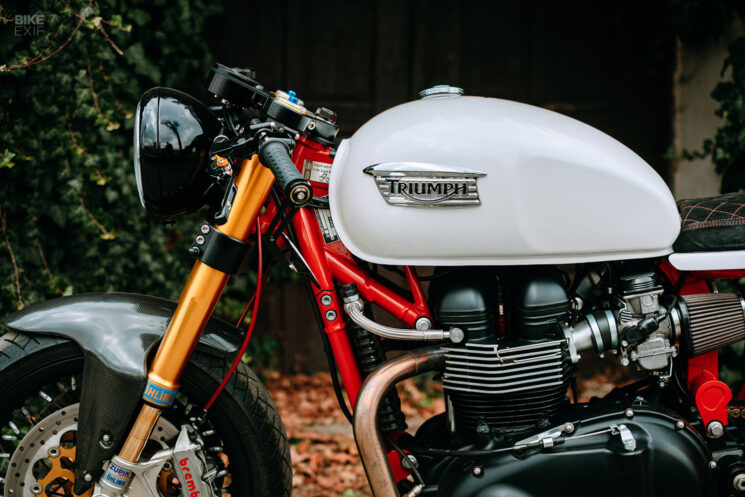
Other mods include new clip-ons, levers and push buttons, new rear sets, and tiny Kellermann turn signals. Lower down you’ll spot a carbon fiber front fender, K&N filters where the airbox used to be, and twin Arrow exhausts.
As modern classic British café racers go, it doesn’t get more quintessential than this. [Rod Motorcycles]
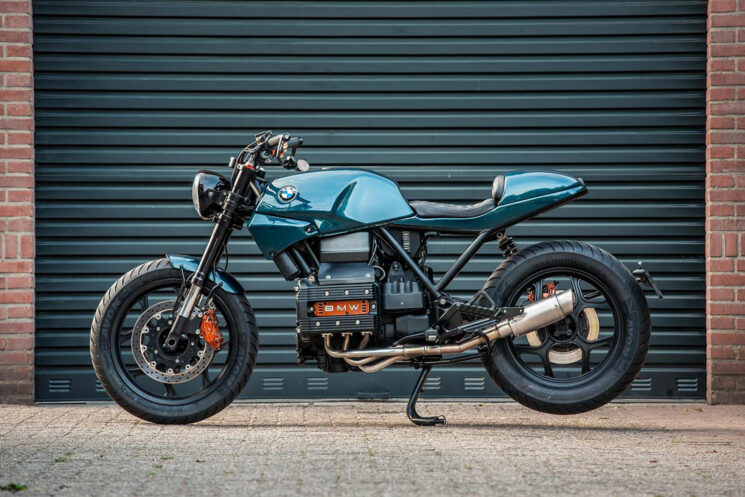
BMW K75 by WiMoto It’s not easy to work with the goofy, angular lines of the K-series BMW, so we’re usually impressed when someone pulls it off. This one’s the work of Wido Veldkamp at WiMoto in The Netherlands, and it’s a mild custom job by his usual standards—but that doesn’t mean he cut any corners.
The project came from a client that had started taking her bike apart, but needed help welding a subframe. So she took it to WiMoto for a little mild fabrication work and ended up just handing the whole project over to them.

The tail section is an off-the-shelf item that she’d already bought, so WiMoto stuck with that. But rather than simply fettle the subframe to fit it, the team fabricated an all-new subframe, angling it upwards at the back and sinking a taillight into it. It’s a clever design; this café racer might not have the flat bone line that so many builders crave, but its contours follow a consistent pattern from front to back.
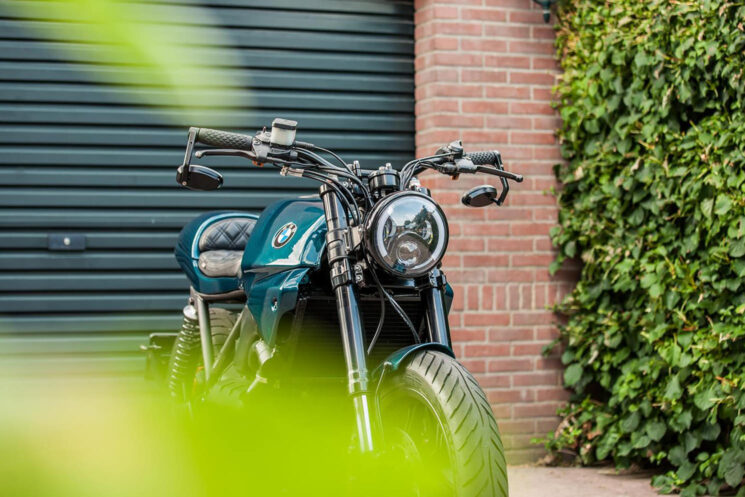
Next, WiMoto adapted the forks from an Aprilia Tuono to the K75, with adaptors to run twin 320 mm brake discs. The front fender and radiator covers are custom parts, and the battery now lives in the tail section, leaving the space under the seat open. The BMW also sports new handlebars, risers, grips and mirrors, and a custom-made license plate bracket that also hosts the rear turn signals.
If you’re looking for the front turn signals, they’re part of the LED headlight unit. A three-into-one exhaust system sits lower down, with Avon Roadrider rubber wrapped around the stock rims.

Finished in a dark turquoise hue, with pops of orange to add contrast, this K75 is as tidy as they come. Most custom builders ignore the older three-cylinder K-series Beemers in favor of the newer and bigger models, but we’d give this plucky street tracker a go any time. [WiMoto | Images by Mark Meisner]
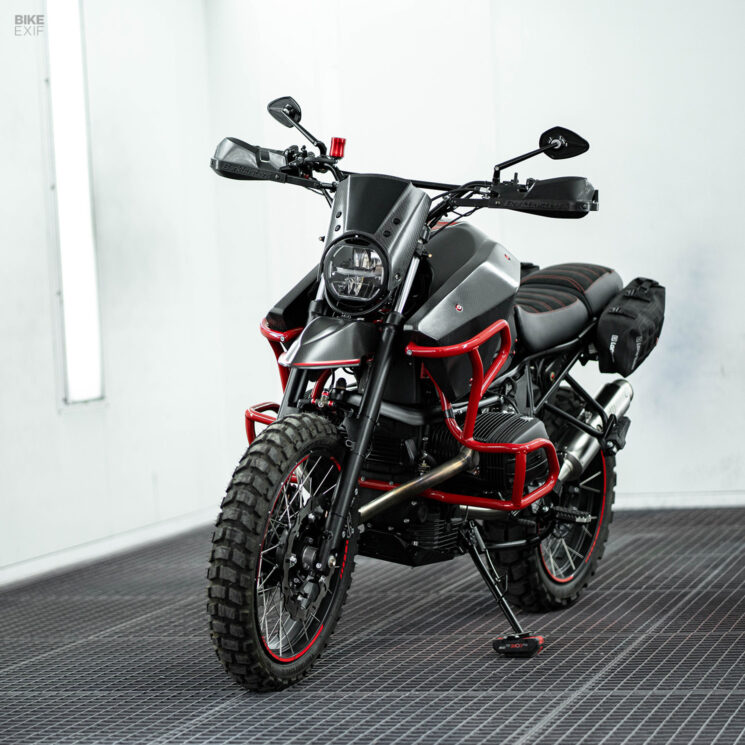
BMW R1100GS by Himora Motors The BMW R1100GS was quite a radical machine when it first hit the scene, but it was soon overshadowed by its successor, the world-famous R1150GS. You can pick the older 1100 up for pretty cheap these days—but while it’s a tough and capable bike, it’s no looker.
Kay Riemann at Himora Motors in Germany agrees, so he gave this 1994-model BMW R1100GS one heck of a makeover. As an industrial and graphic designer, dragging the old boxer’s aesthetic into the modern age was a high priority.
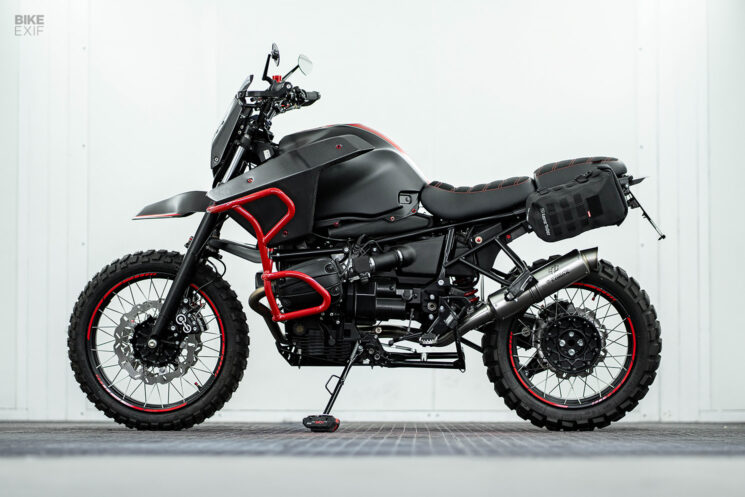
Kay started by swapping the R1100GS fuel reservoir out for one from a newer BMW R1150R. Then he ditched the stock plastics, dressing the bike in a set of smart carbon fiber pieces instead. A two-piece seat sits out back, perched on a modified subframe with a sharp fender to finish off the tail.
The changes weren’t only cosmetic—Kay took care of the bike’s functionality too. He refurbished the wheels, then spooned on new Heidenau K60 tires and upgraded the brake discs. Going deeper, he rewired the bike around Motogadget components and swapped out the EFI unit for an R1150GS system.
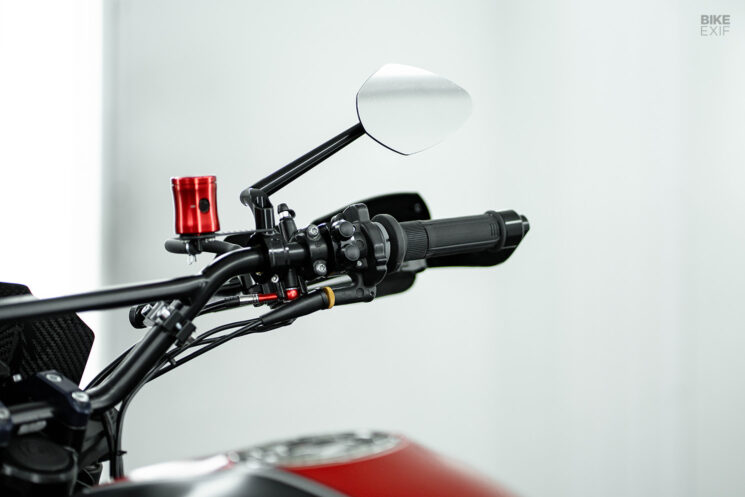
The crash bars, handlebar risers, and headlight brackets are all custom parts, the headlight and heated grips are from Koso, and the hand guards are Barkbuster items. The speedo, mirrors, turn signals, and switches are all from Motogadget, the throttle is from Domino, and the footpegs are from Lonerider. An SP Cobra exhaust muffler finishes things off.
Between its purposeful stance, muscular bodywork, and aggressive black and red color scheme, Kay’s R1100GS sure looks like it means business. Parked next to a stock 1100, it’s streets ahead. [Himora Motorcycles]
